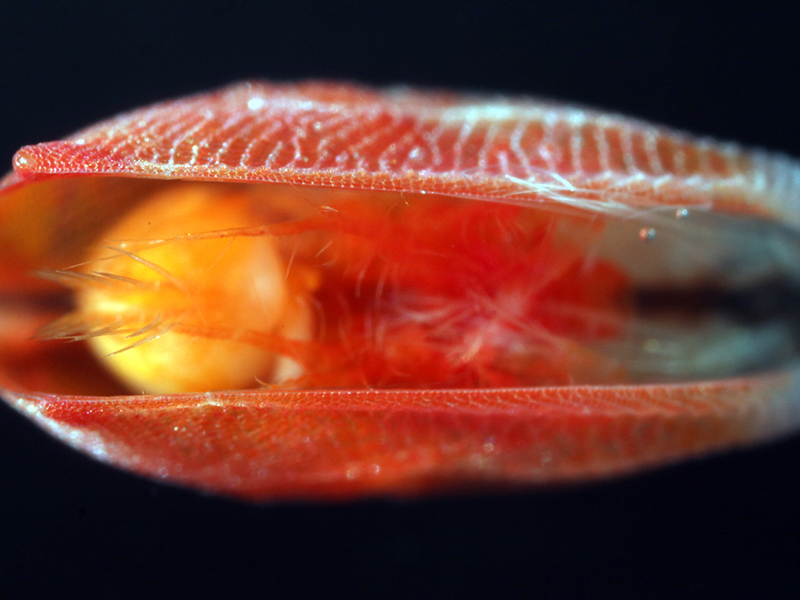

Ostracod collected during the Exploring Pelagic Biodiversity of the Gulf of Alaska and the Impact of Its Seamounts expedition. This ostracod (Conchoecissa plinthina) has two shells reminiscent of a bivalve mollusk. But peek inside its shell and you’ll see it has legs more like shrimp, with jointed appendages and long antennae used for swimming. Indeed, ostracods are far more closely related to shrimp and crabs than to mollusks.